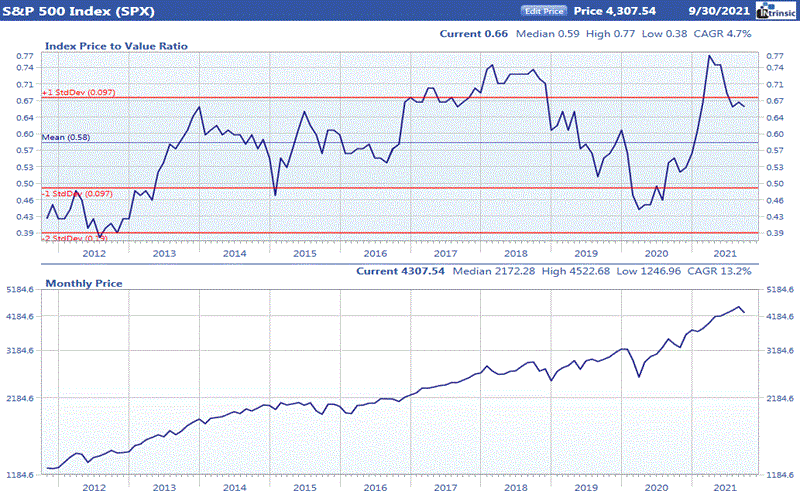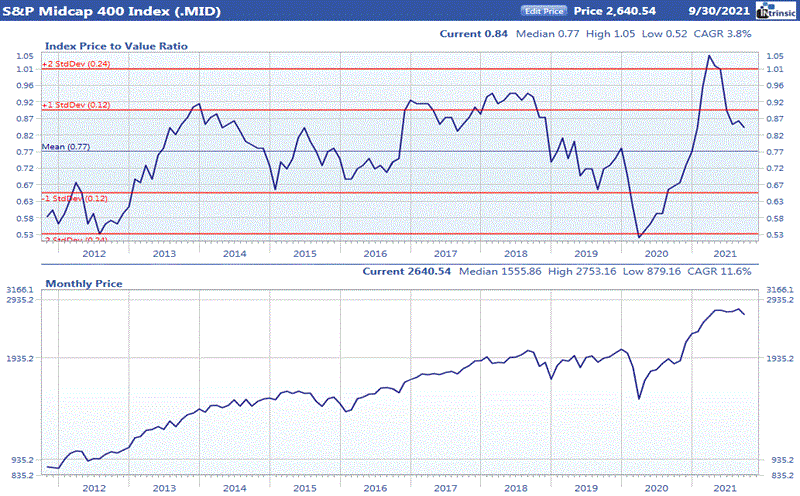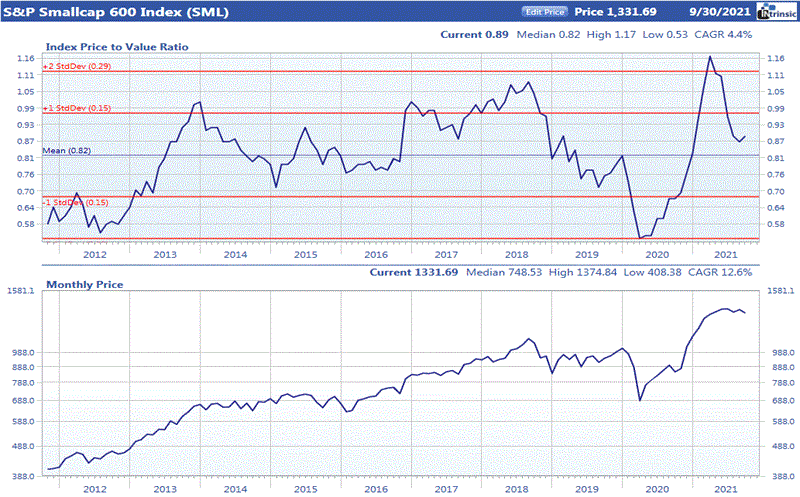Market Briefing
October 2021
Equity indexes retreated in September with large cap stocks declining more than mid and small cap stocks. Economic news headlines were mixed for the month. August payrolls grew at a disappointing rate. Manufacturing and non-manufacturing indexes continued to indicate expansion. Core inflation was slightly lower in August. Retail sales were higher. Existing and new home sales reports were both lower. Investors favored smaller capitalization value and high earnings momentum stocks during the month. Price/book value, p/e based on normal earnings, operating earnings yield and dividend yield were among the best performers. Earnings trend and earnings momentum were also near the top of the selection factor list. High quality, large cap growth stocks had poor performance for the month with quality rating, projected growth rate and 1-year sales growth showing the weakest results. Price/sale, price/cash flow, long-term median growth estimates, and 1-quarter sales growth and 5-year sales growth were near the bottom of the factor performance list. Roughly a quarter of the industry groups we cover had positive average price changes for the month. The best performers were in the energy sector with oil and coal industry groups posting the best gains. Transportation and financial groups also posted positive average price changes for September. Agricultural machinery and industry groups in the materials sector including steel, cement and copper were the weakest price performers for the month.
Value of the Market



Ford’s price to value ratio (PVA) is computed by dividing the price of a company’s stock by the value derived from a proprietary intrinsic value model. A PVA greater than 1.00 indicates that a company is overpriced while a PVA less than 1.00 implies that a stock is trading below the level justified by its earnings, quality rating, dividends, projected growth rate, and prevailing interest rates. While looking at the PVA for an individual company can give a good indication of its value, the average PVA for the market as a whole can provide insight into current valuation levels.
Source: Ford Equity Research
